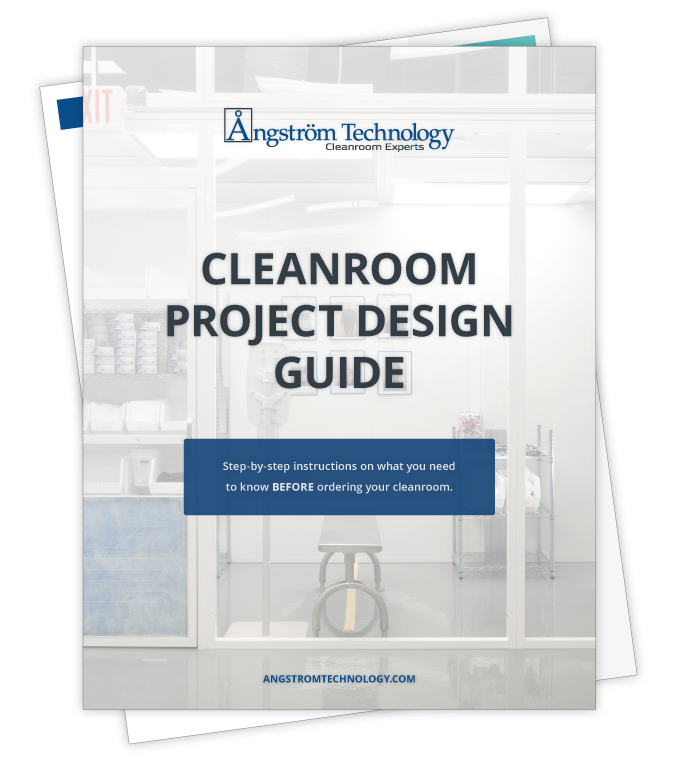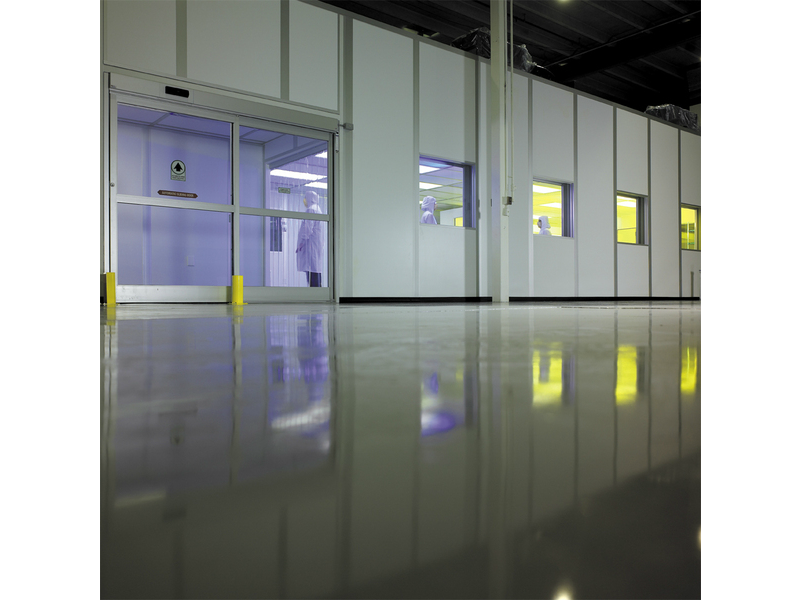If you’re working on a technical specification for your new cleanroom design, you’ve likely noticed different types of cleanroom wall materials in the market. Unless you have experience with all the different types of cleanrooms, you might not yet know which cleanroom envelope system is suitable for your project.
Well, we’re here to help you out as best we can. We know it can be tough to find the info you’re looking for when it comes to cleanroom components, so we put together this blog to help you figure out your options for cleanroom walls. First, what essential elements do you need for a successful cleanroom wall that upholds your application’s standards?
When it comes to cleanroom walls, you’re looking for two things: smooth, dust-free surfaces. But finding the perfect surface type for your operation is easier said than done. Here are some considerations to determine what wall material type is best for you:
FLEXIBILITY
One of the biggest concerns for any new cleanroom is deciding how flexible your cleanroom should be. If you plan on housing it in the same building for a decade or more, you can probably get by with cheaper wall options.
Drywall coated with epoxy paint was a popular way to create cleanroom walls. You would take your building’s existing walls and paint them with an epoxy coating rated for cleanrooms. But one of the main problems with painted drywall is that those will be the walls you’re stuck with now and forever. When it comes to stick-built cleanrooms, there’s minimal scope for rearranging or expanding the space you started with, and providing the required extraction levels is challenging.
If you think your cleanroom is likely to expand once operations get underway, then a modular cleanroom with moveable wall panels would be a much better option. The materials might cost a bit more upfront, but you’ll also want to consider what you’d be getting for that additional fee.
Modular cleanroom wall panels are typically manufactured out of scratch and damage-resistant materials. This is helpful because if something runs into one of your modular wall panels, you don’t have to worry about drywall particulate below an epoxy coating seeping out and contaminating your cleanroom. If a modular wall panel gets a scratch, there’s very little cause for concern, and in most cases, you can return to business as usual. Worst case scenario: if the damage is substantial, you can arrange for a replacement panel to be easily fit into your existing system in no time.
STANDARDS
SoftWall cleanroom walls are the most economical type of modular cleanroom wall construction. Clear and flexible panels are mounted onto a robust steel frame, enclosing the clean area. As the panels overlap, the walls remain an effective barrier to create an ISO class 7-8 cleanroom, but with a higher volume of air required to achieve a higher level of cleanliness, you may need a solid wall panel.
RigidWall cleanroom construction can withstand the high airflow required for ultra-clean environments such as ISO class 5-6 clean zones. But the bright and durable finish makes them an attractive option for ISO class 7-8 cleanrooms.
HardWall cleanroom panels create a flush finish to a cleanroom wall. They are perfect for high-performance cleanroom applications with a range of proprietary features, such as raceway trunking to supply services, flush glazing, doors, and wall and ceiling panels.
CLEANING AGENTS
Once you’ve decided on modular cleanroom walls, it’s time to consider the cleaning agents you’ll be using on those walls. Every cleanroom classification is different and requires different levels of cleaning and disinfection. Pharmaceutical cleanrooms, for example, must be disinfected regularly with very harsh chemicals to prevent microbial buildup. In this situation, you need a HardWall cleanroom wall finish that can hold up to those chemicals without warping, corroding, or melting. Walls made from stainless steel with a cleanroom-specific coating are typically suitable for applications that use super-strong cleaning materials.
On the other side of the coin, if you plan on cleaning your cleanroom regularly but don’t need to use the highest-grade disinfectants, RigidWall cleanrooms wall options like acrylic, static dissipative PVC, or polycarbonate wall panels are a more cost-effective choice. When using lower-grade cleaning materials, you need a wall panel that prevents bacteria and particulate from sticking to it. You won’t have to worry about harsh chemicals eating through coatings and materials, causing a lot of particulate buildup within your cleanroom.
DURABILITY
As mentioned before, durability can play a significant role in choosing cleanroom wall material. Depending on your application, you’ll need varying levels of material durability. Some materials, like lightweight vinyl modular wall panels, or epoxy-coated drywall, can easily scratch. When the protective coating is breached, the material underneath is exposed and can give off dangerous particulate that can interfere with your processes. Moreover, some wall materials not certified for cleanroom use could outgas or start to give off particulate as they age.
Cleanrooms with more intensive standards are typically best served by walls made primarily of aluminum structure. Aluminum is lightweight, durable, and, best of all, doesn’t give off particulate as it ages. That said, it is a more costly option. So if your cleanroom doesn’t need quite that level of cleanliness, you might choose a less expensive option.
COST
Perhaps the most significant consideration for your cleanroom wall material decision is that you have to stick to a specific budget. With cleanrooms, particulate control is the most critical factor, so it stands to reason that a large part of the investment goes into the airflow, the expensive filtration systems, and the energy you use to keep your cleanroom functioning correctly. Because of this, many cleanrooms don’t look as expensive as they are.
Your cleanroom walls can be one of the least costly aspects of your cleanroom as they are relatively low-tech. So, if you’re looking for an area of the project where you can save money, this could be it.
That said, a few companies want their cleanrooms to reflect the expense put into them, so they spend more on their walls. A high cosmetic finish can be achieved if you have extra room in the budget and want to build a cleanroom that looks like a high-tech, cutting-edge facility. But know that you don’t have to have the highest specification of walls to meet your cleanroom standards.
When designing a new cleanroom, deciding which cleanroom wall material will work best for your application and convey the image you’re looking for can be difficult. If you have more questions about choosing a suitable wall material for your cleanroom, call the experts at Angstrom! We’re here to help you, and we’d love to provide you with any cleanroom information you want to make the best, informed choice for your company. Call our office at 888-768-6900, or request a quote online today!
GET INSTANT ACCESS TO OUR CLEANROOM DESIGN GUIDE



